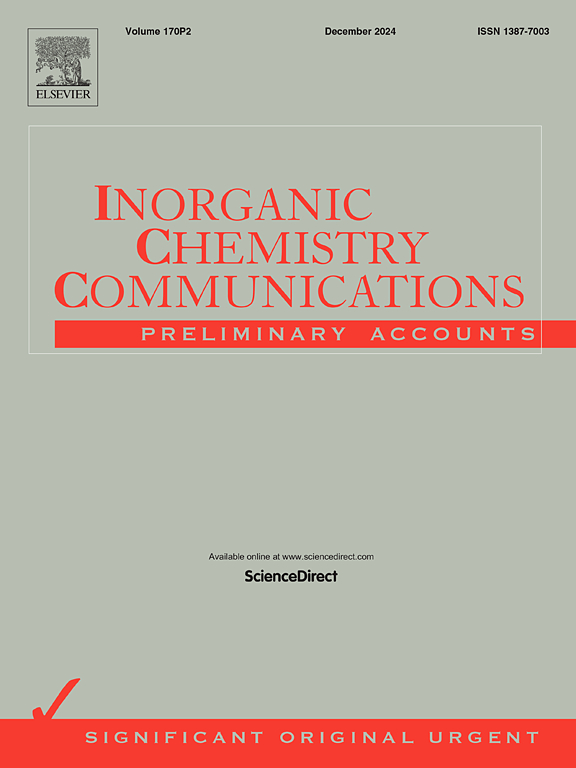电子金属-支撑相互作用增强CO-SCR性能
IF 4.4
3区 化学
Q1 CHEMISTRY, INORGANIC & NUCLEAR
引用次数: 0
摘要
选择合适的支撑材料是决定塑型催化剂CO-selective catalytic reduction NO (CO-SCR)催化性能的关键因素。以往的研究主要集中在载体的物理支撑特性上,而对载体材料对催化功能的内在影响关注不足。本文基于其优异的稳定性和一定的机械强度,选择了铜箔(CF)作为载体,通过原位水热法制备了MOF@POM/CF前驱体。在300、400和550℃的高温热解条件下,制备了Cu/CF-300、Cu/CF-400和Cu/CF-550型催化剂,其中Cu/CF-300在350℃下的NO转化率为85%,在400℃下GHSV为15000 h−1,完全脱除。系统表征表明,电子金属-载体相互作用(EMSI)不仅能促进活性金属位点的均匀分散,还能有效调节活性金属的电子转移和化学性质,从而提高CO-SCR反应动力学。此外,Cu/CF-300催化剂表现出较好的氧中毒抗性,具有较好的应用前景。本文章由计算机程序翻译,如有差异,请以英文原文为准。

Enhancement of CO-SCR performance achieved by electronic metal-support interaction
The selection of an appropriate support material plays a critical role in determining the catalytic performance of molded catalysts for CO-selective catalytic reduction of NO (CO-SCR). While previous research has predominantly focused on the physical supporting characteristics of carriers, insufficient attention has been paid to the intrinsic influence of support materials on catalytic functionality. Herein, we selected copper foil (CF) as the carrier based on the superior stability and certain mechanical strength, and successfully prepared MOF@POM/CF precursor via in-situ hydrothermal method. Furthermore, a series of molded catalysts (Cu/CF-300, Cu/CF-400 and Cu/CF-550) were obtained via high-temperature pyrolysis on 300, 400 and 550 °C, in which the Cu/CF-300 performed 85 % NO conversion rate at 350 °C and complete removal at 400 °C with the GHSV of 15,000 h−1. Systematic characterization revealed that the electronic metal-support interaction (EMSI) not only facilitates homogeneous dispersion of active metallic sites but also effectively regulate the electron transfer and chemical properties of active metals, thereby enhancing the CO-SCR reaction kinetics. Furthermore, the Cu/CF-300 catalyst exhibited remarkable resistance to oxygen poisoning, indicating promising practical applicability.
求助全文
通过发布文献求助,成功后即可免费获取论文全文。
去求助
来源期刊

Inorganic Chemistry Communications
化学-无机化学与核化学
CiteScore
5.50
自引率
7.90%
发文量
1013
审稿时长
53 days
期刊介绍:
Launched in January 1998, Inorganic Chemistry Communications is an international journal dedicated to the rapid publication of short communications in the major areas of inorganic, organometallic and supramolecular chemistry. Topics include synthetic and reaction chemistry, kinetics and mechanisms of reactions, bioinorganic chemistry, photochemistry and the use of metal and organometallic compounds in stoichiometric and catalytic synthesis or organic compounds.
 求助内容:
求助内容: 应助结果提醒方式:
应助结果提醒方式:


